Abbey Road has always been my favourite Beatles album. Released in 1969, the album marked the end of an era, as it would be the last time the band recorded together before their eventual split.
After the alleged ‘troubled’ recording of Let it Be, the Fab Four returned to the studio to deliver one last album. An album for me that showcases the immense talent of these four young men.
These ‘young men’ were not even 30 when they reconvened in the EMI Recording Studios on Abbey Road in North London. By now there were three songwriters, not two. George Harrison had now blossomed into a beautiful songwriter contributing two of the band’s most memorable songs. From the heartfelt ballad “Something”, inspired by Pattie Boyd, to the joyous “Here Comes the Sun”, This ‘ Quiet Beatle now roared.
Abbey Road also showcases the magic of John and Paul from the iconic opening number ‘Come Together’ to the side 2 medley that closes the album.
Ringo also wrote and sang the wonderfully silly Octopuses Garden – which is also a great introductory song if you wants kids to dig the Beatles
The album was recorded at a time of growing animosity between the band. Tensions over royalties and management were growing – George quit the band at least twice whilst Ringo already had his eye on a solo career. Money, Management and ownership were at the root of these tensions. Apple Corp, the company they had created together in 1968 was in trouble, whilst a battle raged within the band for who would manage them – Paul wanted someone, the others wanted someone else.
‘You Never Give Me Your Money’ was Paul’s reference to the royalties paid in cheques, not cash, “You never give me your money, you only give me your funny paper.”
Oh and John had told the band he was leaving.
Whilst this tumultuous time occasionally comes out on the record, like the roaring end of ‘I want You (She’s So Heavy’) that abruptly ends side one – it is ultimately a beautiful and harmonious record that comes out,
We open side two with one of the most beautiful pop songs ever written – by the Beatles or anyone else. George Harrison wrote this song strolling around the gardens of Eric Clapton’s Hurtwood Edge home.
George had skipped the sessions to avoid yet another heated business meeting about Apple. In his autobiography, “I Me Mine” he writes of the inspiration for this beloved song.
In his autibiohrgaphy, George talks of the songwriting, “ Here Comes the Sun was written at the time when Apple was getting like school, where we had to go and be businessmen: ‘Sign this’ and ‘sign that.’ Anyway, it seems as if winter in England goes on forever, by the time spring comes you really deserve it. So one day I decided I was going to sag off Apple and I went over to Eric Clapton’s house. The relief of not having to go see all those dopey accountants was wonderful, and I walked around the garden with one of Eric’s acoustic guitars and wrote “Here Comes the Sun.”
Just like that!
The side 2 medley of songs was a band connecting multiple ‘offcuts’ or half finished songs into one long medley, including the beautiful ‘Sun King’, the lighthearted threesome of Mean Mr Mustard, Polythene Pam and She Came in Through the Bathroom Window (which would become a hit single for Joe Cocker) before we come to the final three tracks – Golden Slumbers, Carry That Weight, and The End.
“Once there was a way to get back homeward, Once there was a way, to get back home..” sings Paul at the start of Golden Slumbers. Was this a yearning to go back to a simpler life?
As we head for, quite literally, The End we are gifted Ringo’s only ever drum solo. At 13 seconds it’s not long but it is held in high esteem from other drummers.
“And in the end, the love we have is equal to the love we gave.” These words, from the beautiful track “Golden Slumbers”, perfectly encapsulate the spirit of “Abbey Road”. It’s an album that radiates love and creativity, and serves as a testament to the incredible talent of The Beatles. For me, it will always be a cherished masterpiece, and a fitting last chapter in their recording career.
“Abbey Road” was produced by the Beatles themselves, with assistance from engineer Geoff Emerick and assistant engineer Phil McDonald. The album was recorded between February and August of 1969, at EMI Studios in London, England.
The album was released on September 26, 1969, in the United Kingdom, and on October 1, 1969, in the United States. It was the Beatles’ 11th studio album and their last to be recorded before the band’s breakup in 1970.
Despite the tensions within the band during the recording sessions, “Abbey Road” was a critical and commercial success, and it remains one of the most beloved albums in the history of popular music. Its innovative use of studio technology, seamless song transitions, and memorable songs and performances have made it a landmark album and a fitting tribute to the Beatles’ incredible career.
The Abbey Road Cover
The iconic cover photograph for “Abbey Road” has to be the most iconic of all London Music Landmarks. It was taken by photographer Iain Macmillan. The photo features the four Beatles walking across a zebra crossing outside EMI Studios in London, with John Lennon leading the way, followed by Ringo Starr, Paul McCartney, and George Harrison in the back.
The photo shoot took place on August 8, 1969, and Macmillan had just ten minutes to capture the shot due to the police holding up traffic. The photo was taken from a stepladder positioned in the middle of the road, and Macmillan had to quickly snap six photographs while the Beatles walked back and forth across the road.
The chosen photograph was eventually used for the album cover, and it has become one of the most iconic images in the history of popular music. The image of the Beatles crossing the road has been imitated and parodied countless times over the years, and the zebra crossing outside Abbey Road Studios has become a pilgrimage site for Beatles fans from all over the world. I even tried it myself !
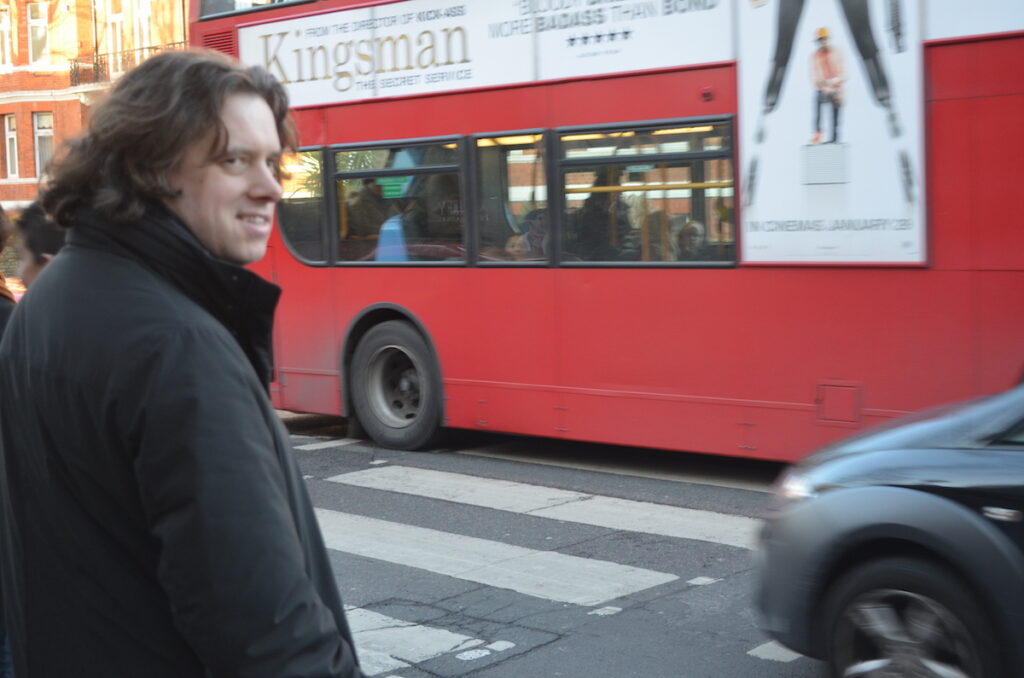
Visiting Abbey Road Studios
After the album release, EMI quickly changed the name of the studio to ‘Abbey Road Studios’ which it remains today. The actual studio remains an active and iconic recording studio, so you may not get a look inside, however you can visit the crossing, sign the graffiti wall, wave at the webcam and pop in to the gift shop for their souvenirs.
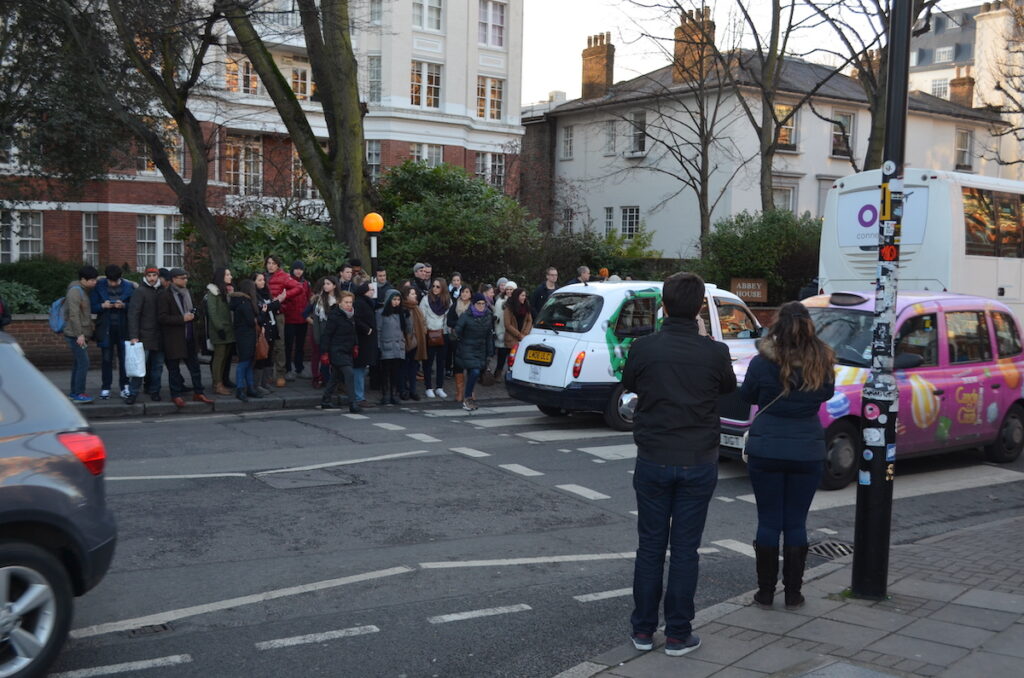
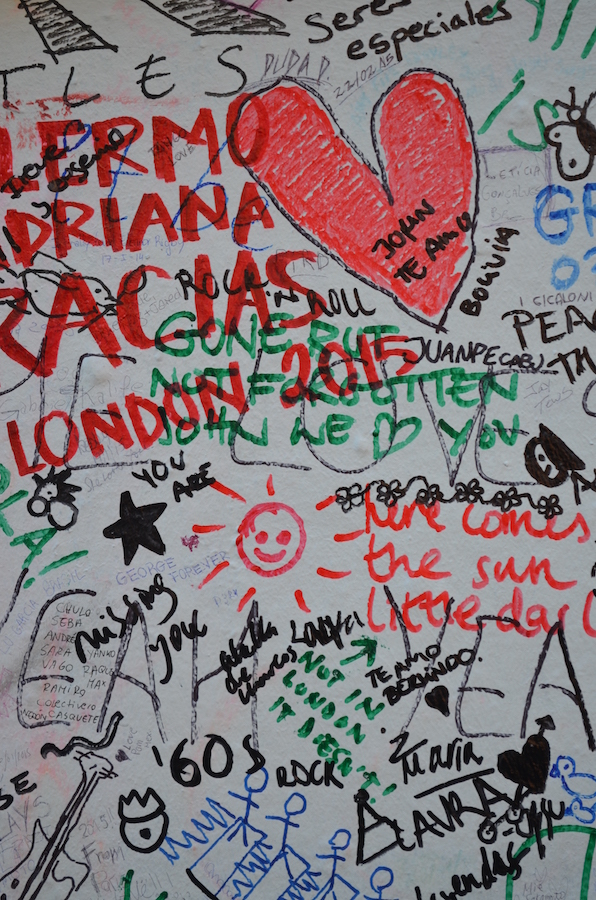
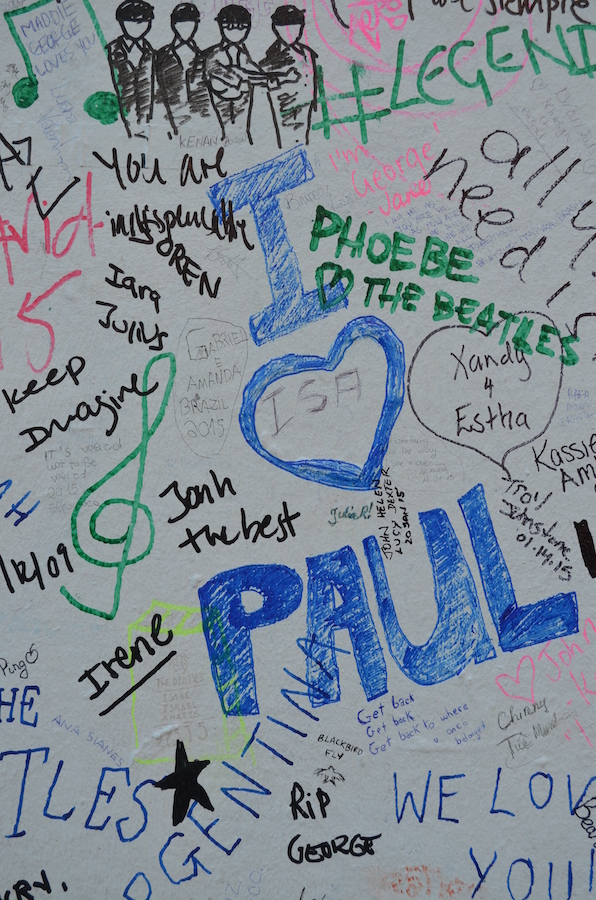
Abbey Road Store
You can pop into the Abbey Road store, just to the right of the main studio building. In here you can see some cool pictures of bands that have recorded here. You can also pick up some Abbey Road merch and plenty of cool Beatles stuff. (or you can shop online)
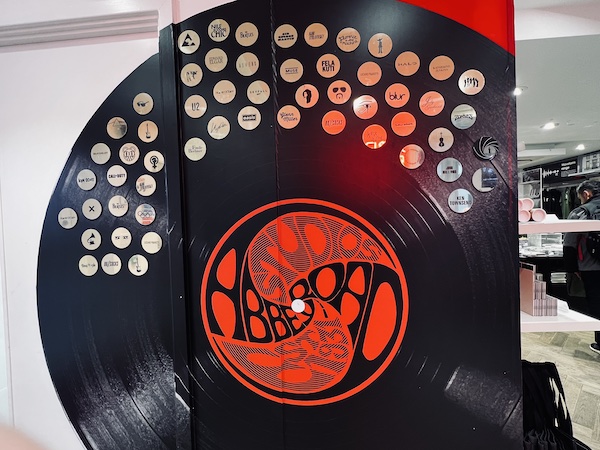
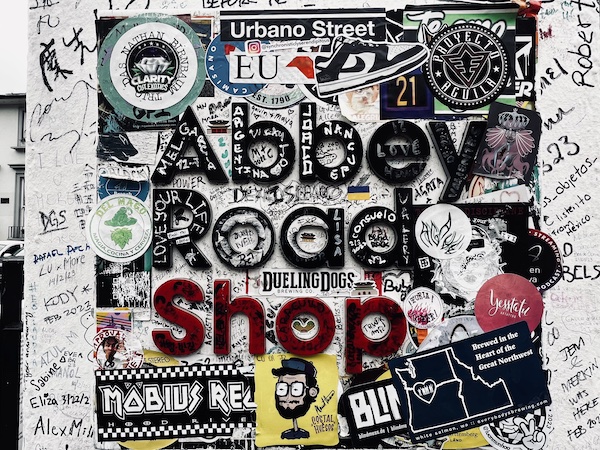
Address & Directions
Abbey Road Studios
3 Abbey Road St.
John’s Wood London
NW8 9AY
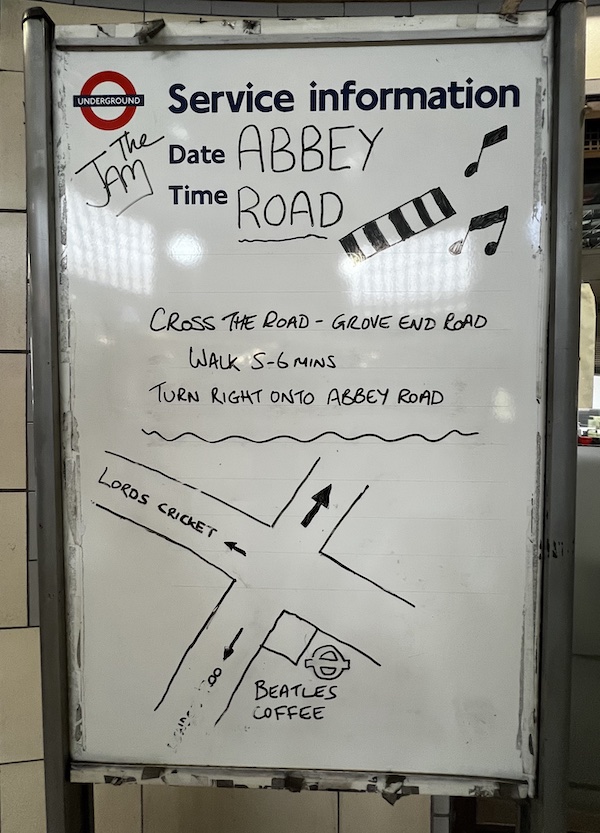
Nearest Tube: St John’s Wood Underground station on the Jubilee line one stop North from Baker Street (on the Circle Line)
From the Tube Station, go straight out and across the road. Keep going straight until you cross Abbey Road. It’s about a 6 minute walk.
